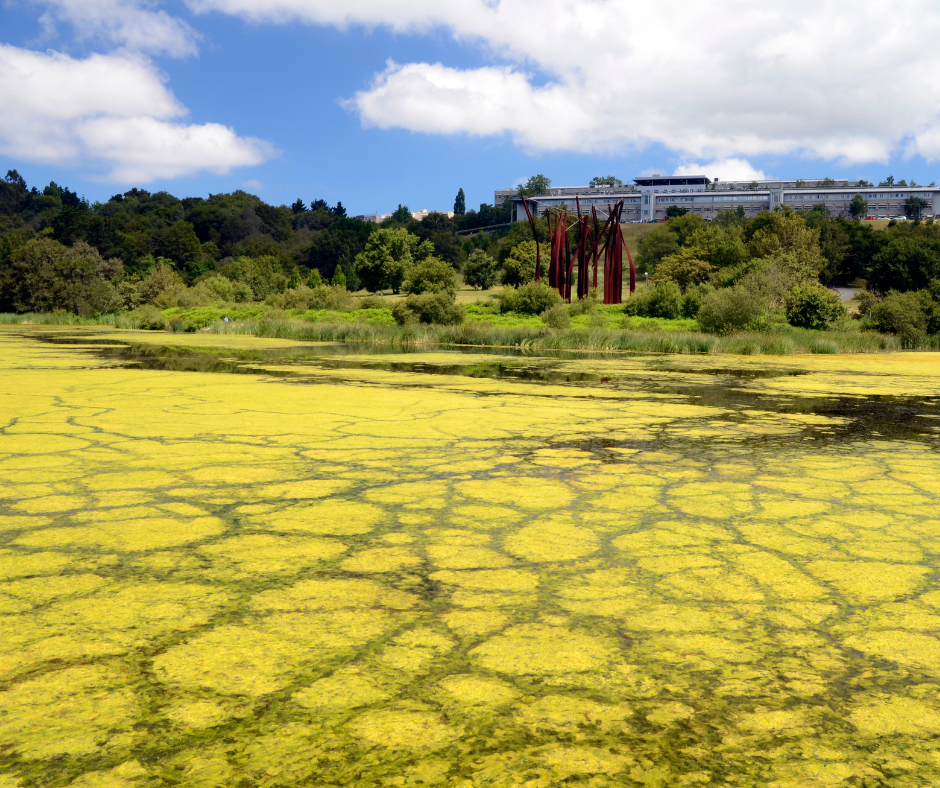Eutrophication is like a pool party where everyone brings food, but no one bothers to clean up afterwards. Aquatic plants binge on nutrients until there is no more room to swim!And while the algae rave underwater, the fish are left wondering where all the oxygen has gone.
- Hidden risks of excess nutrients
- Chain effects of eutrophication
- Sustainable practices to reduce eutrophication
Hidden risks of excess nutrients
Eutrophication is a phenomenon that affects waterways and coastlines; it is characterised by an excessive increase in nutrients, especially phosphorus and nitrogen, which stimulates excessive growth of algae and aquatic plants.
This phenomenon can lead to a reduction of available oxygen in the water, compromising the survival of fish and other aquatic organisms.
The sources of these nutrients are multiple and include intensive agriculture, untreated wastewater and air emissions.
Unsustainable agricultural practices, such as overuse of fertilisers and improper irrigation, can increase nutrient run-off to watercourses.
Similarly, intensive livestock farming produces large quantities of excrement, which can enrich water bodies with nitrogen and phosphorous through surface runoff.
Urban areas contribute through sewage, with often overloaded or malfunctioning sewage systems releasing untreated waste water into water bodies.
Also the inadequate management of solid waste, such as the wet fraction which, being organic, can release nutrients. Landfills can produce nutrient-rich leachate that, if not disposed of, can contaminate ground and surface water.
Changes to the natural landscape, such as deforestation and urban development, can also alter the nutrient cycle and increase nutrient runoff into water.
Chain effects of eutrophication
These nutrients promote exponential growth of algae, which can form extensive algal blooms. These blooms not only reduce water transparency, but can also be toxic to aquatic and terrestrial fauna, including humans who come into contact with contaminated water or consume infected fish.
An organic blanket is created that obscures the water column below, killing flora and fauna.
Furthermore, the decomposition of dead algae consumes oxygen, creating ‘dead zones’, areas so oxygen-poor that classic aquatic ecosystems cannot survive.
The consequences of eutrophication are not limited to the natural environment, but economic activities such as fishing and tourism can also suffer significant damage.
Tourism suffers when beaches and waters become visually unattractive or hazardous to health. Drinking water is also more complex, and burdens public and private finances.
Sustainable practices to reduce eutrophication
In agriculture, the adoption of sustainable practices such as the use of controlled-release fertilisers, crop rotation and precision farming can significantly reduce nutrient runoff into waterways.
The creation of vegetated buffer zones along watercourses is another effective strategy, as these areas act as natural filters that absorb excess nutrients.
To achieve a lasting improvement in water quality, biomanipulation interventions can be adopted: a series of actions aimed at modifying the biological structure of an ecosystem with the objective of achieving specific results.
For example, in a lake, you can increase the number of predatory fish to change the natural balance.
In addition to the change in trophic structure, some research has shown that the use of specific aquatic plants can promote the reduction of phosphorous and nitrogen through a process known as phyto-purification.
In this respect, the algae Hydrodictyon reticulatum (green algae) is capable of removing up to 67.3% nitrogen and phosphorous in a relatively short time.
Targeted oxygen insufflation or deep water sampling are also contemplated solutions for lake waters, but not very effective.
So, as is often the case, it appears that the best way to keep these ecosystems safe from the risk of eutrophication is prevention. It must be done through care and respect for the land, technological advancement and assiduous and effective monitoring.
Play for the planet!
